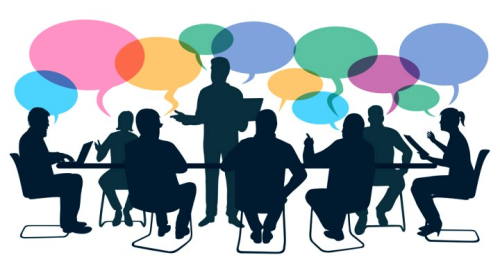by Cdr. Bud Slabbaert
 Brainstorming is one of the most effective catalysts for innovation when done right. It’s not just about tossing ideas around; it’s about creating a dynamic space where diverse minds collide, challenge assumptions, and spark breakthroughs. Brainstorming fuels innovation and unlocks creative flow by encouraging free thinking and suspending judgment, allowing unconventional ideas to surface.
Brainstorming is one of the most effective catalysts for innovation when done right. It’s not just about tossing ideas around; it’s about creating a dynamic space where diverse minds collide, challenge assumptions, and spark breakthroughs. Brainstorming fuels innovation and unlocks creative flow by encouraging free thinking and suspending judgment, allowing unconventional ideas to surface.
Rapid idea generation helps identify multiple pathways to tackle complex challenges. One person’s spark can ignite another’s insight, leading to layered, more refined concepts; from spark to strategy. Conflicting minds can find compromise and unification in brainstorming sessions.
To a government, innovation within the country or a community is a local asset and a strategic advantage. When communities innovate, governments gain momentum, legitimacy, and resilience. It may lead to economic growth and diversification. Community-led innovation often sparks new industries and business activities. Grassroots innovation reveals real-time needs and solutions that can help governments craft policies that are timely and effective. It can dramatically reduce top-down guesswork and rather build bottom-up validity.
Innovative communities attract international attention, partnerships, and foreign investment. What is the importance of innovation related to global or regional positioning? Positioning is the strategic process of shaping how a product, service, or brand is perceived in the minds of consumers, especially in relation to competitors. It’s about carving out a distinct identity that resonates with a target audience.
To accelerate innovation and problem-solving, ‘silos’ must be broken. A silo in group thinking is a mindset or organizational behavior in which individuals or teams operate in isolation, focusing only on their own goals rather than the collective mission. A silo mentality is the unwillingness to share information or collaborate across departments or groups within an organization, be it industrial or political. It often stems from competition between teams or leaders, lack of trust, or poor communication structures. Cross-functional collaboration reveals blind spots and opens new perspectives.
Who should join in innovative brainstorming sessions? To maximize innovation, aim for diversity in expertise, perspective, and personality. Subject matter experts, community stakeholders, and creative thinkers. Yet, just as important are a skeptic or devil’s advocate who dares to question suggested answers. The strength of compromising lies in its ability not only to create mutually acceptable solutions but also to bring them close to perfection. Mind that people of any kind, being buyers, constituents, or partners, don’t want paraphernalia but rather want benefits.
The contributing elements of innovation are pushing boundaries and introducing bold and imaginative concepts. Fresh, unfiltered perspectives have to be offered that challenge legacy thinking. Ideas must be aligned with long-term goals and feasibility, and ensure relevance and resonance with actual needs. Existing best practices should be taken into consideration.
Encouraging brainstorming for innovation is a strategic imperative for any forward-thinking leader, board, or team. Innovation demonstrates a proactive, future-focused leadership style. It drives competitive advantage and positions the innovator as a thought leader in its field, industry or region. It exposes hidden opportunities.
When citizens and residents innovate, they feel ownership over their future. This builds trust and civic pride. Youth-led initiatives, in particular, foster leadership and reduce brain drain. Start with the two questions: “What’s a challenge we’re uniquely positioned to solve?” and “What would make this island a global model for ???”
Innovation shall be our legacy. Let us not wait for ideas and solutions to arrive from abroad. Let us recognize, support, and scale the available brilliance in our communities. Innovation drives a flourishing economy that will benefit all!